The easy way to create ‘rooms’ in your garden
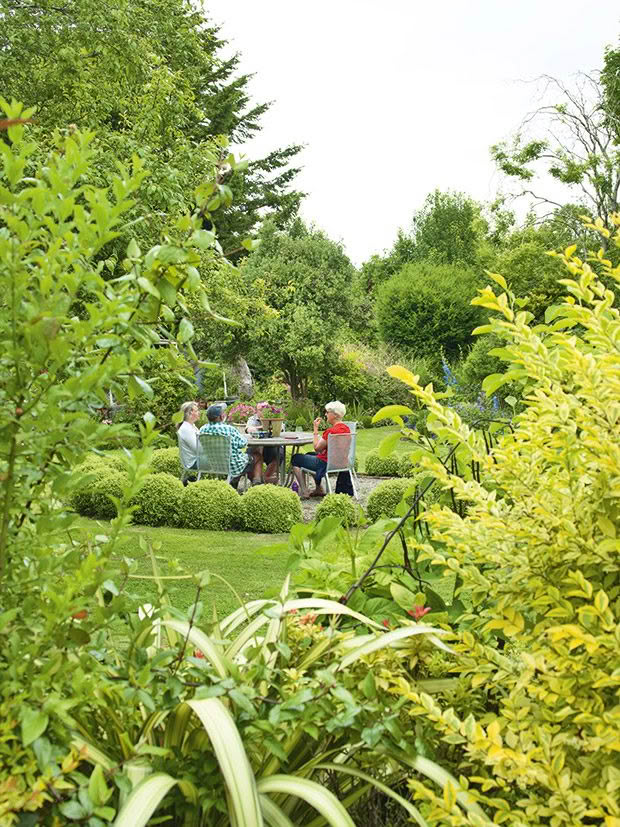
The ‘gin garden’, designed by Sally Brown of Blueskin Nurseries and Cafe, near Dunedin. The walls include an English beech hedge, and carefully pruned pittosporum ‘balls’.
It helps if you have a big budget and a team of landscapers, but there are easy ways to create classic ‘rooms’ in your garden.
Words: Jane Wrigglesworth
When you create rooms in a garden, you’re creating the impression that there’s somewhere to go. It slowly unravels, meandering paths or transitional areas taking you from one space to another. Hedges, walls, and screens act as room dividers and help set the scene for the type of plantings and features inside.
It’s a classic design feature of the world-famous Sissinghurst Castle Garden in South East England, created by Vita Sackville-West. It uses walls, hedges, and even long grass to guide visitors to different garden rooms.
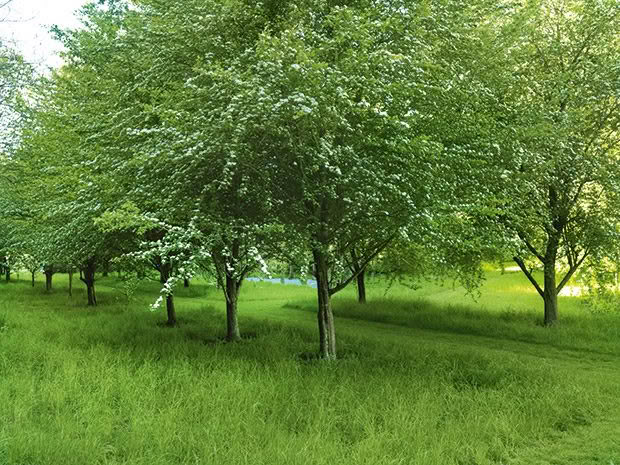
The hawthorn walk at Barewood Garden in Marlborough creates a pathway through the garden, framed by long lawn grass.
Part of the beauty of the concept is that each room is unique. It allows you to have various garden styles and different coloured plants while avoiding clashes between them. Warm yellows and oranges might dominate one room; blues and other cooler hues may appear in another. You can combine a wild and rambling pocket prairie and a formal garden with neatly clipped topiary.
Here’s how to create rooms in your garden without going to huge expense.
Think of your garden in sections
Every garden will have features that can become the basis of a room. Existing shrubs and trees may be the framework. Stairs, pathways, and topographical changes can create flow from one room to another.
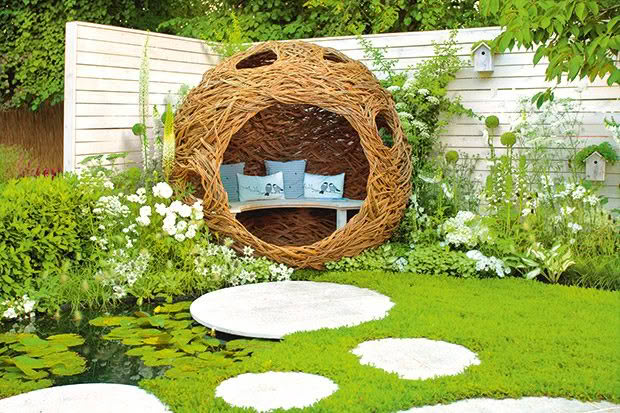
What features already exist in your garden or landscape?
• flat areas, which could be divided;
• slopes, which could form a path or wall;
• rocky spots that could be a feature;
• grass that could become a meadow;
• a view you want to protect.
For example, a small front garden could be a series of flower beds separated by low hedges, to retain views from the house. Another consideration is how you use your garden. For example, the north-facing side of your house might become a series of rooms:
• an enclosed patio for entertaining;
• a children’s play area;
• a private retreat for a spa;
• a vegetable garden;
• an orchard.
Jane’s tips:
• Do you need electricity for ground lights, spotlights, fairy lights, water pumps, and entertaining purposes? Sort the logistics before you start.
• Create one room at a time. It saves you from the overwhelm you can feel looking at a complex landscape plan. A good starting option is a dining and entertaining area, then work your way outwards as time and budget allow.
The walls
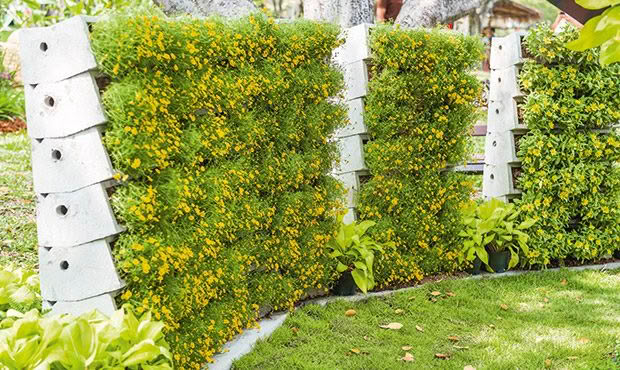
What you use depends on:
• your budget;
• what you’re trying to achieve;
• how quickly you want to achieve it.
PLANTS
Plants can be used to create walls and are usually the most economical option (especially if you grow them yourself), but they’ll need a few years to reach a decent size. Some fast-growing hedges take less time but tend to require more clipping.
Good low hedging plants: buxus, lonicera, coprosma, lavender, hebe, corokia.
Good medium-tall hedging plants: griselinia, pittosporum, Camellia sasanqua, Choisya ternata, Ficus Tuffy, Photinia Red Robin, Syzygium australe Brilliant, Olearia paniculata, osmanthus, viburnum, Yew (Taxus baccata), Portuguese laurel (Prunus lusitanica).
Other plants options:
• fast-growing climbers or vines on a trellis or pergola;
• plants in containers;
• espaliered fruit trees.
Structural options:
• wood or steel panels
• trellis
• brushwood or bamboo fencing
• marine plywood, painted or stained
• recycled materials (eg, old doors, windows, shutters, posts, fallen branches)
• neatly stacked woodpiles
The unusual option: Below are pleached trees, effectively trees on stilts. The tree trunks are bare until about 1.8m high, with a full, leafy screen of foliage above.
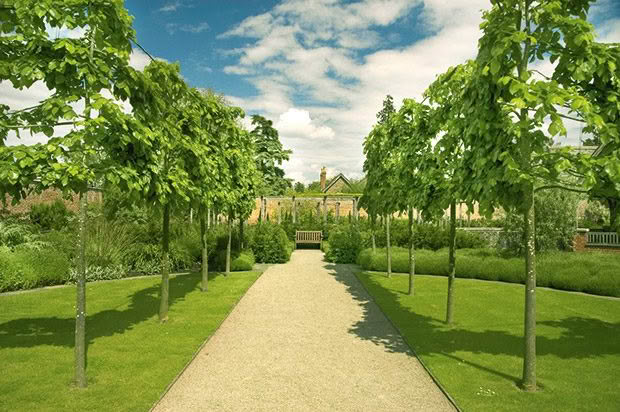
The quickest option: It’s more expensive, but ready-made fence panels with wooden, PVC, decorative steel, bamboo, or brushwood fence panels or trellis give you instant walls. The garden pictured below uses stacks of wooden planter boxes to create a pretty screen. However, depending on your climate, you’ll need an irrigation system to keep it looking good.
Jane’s tips:
• if you have a low brick wall that isn’t making enough impact, top it with trellis for height, then soften the look with climbing plants.
• if your timber is a mish-mash of woods and sizes, paint them the same colour
to unify a space;
• Look at the view you want to keep, then build ‘walls’ around it, such as a low hedge, or a window frame within a fence.
• if a solid wall will block much-needed sunlight, use trellis instead.
The floors
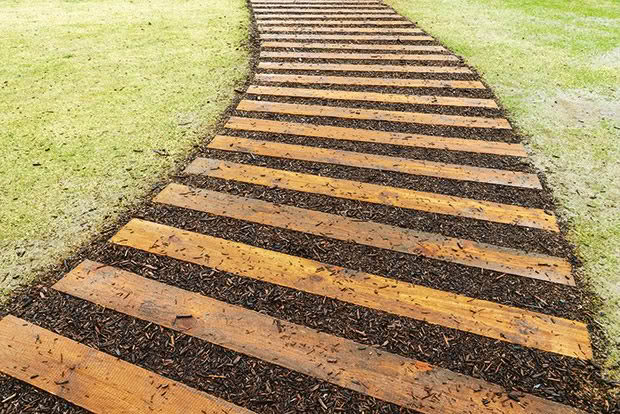
Plants and landscaping at ground level can also help to define a space. A hedged, paved, tiled, or concreted area adjacent to the house provides an indoor-outdoor room for entertaining. Large grassy areas can be broken into a series of rooms using meandering pathways of brick, paving stones, shells, pebbles, or mulch.
Jane’s tips:
• Enclose dining or relaxation areas with low walls, hedging, or garden beds, so it’s easy to see children if their play area is in the next room.
• Use thick grass or deep layers of bark or rubber chips in play areas.
4 TECHNIQUES FROM VITA SACKVILLE-WEST
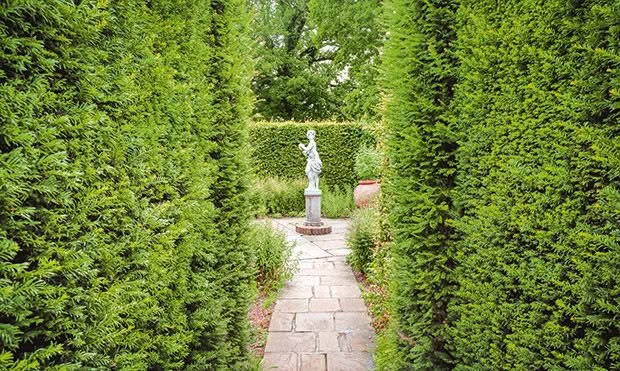
A peek through a yew hedge at a sculpture.
The ‘walls’ of a garden room create a sense of intrigue and make a garden seem larger. An open archway (like the one above) gives a glimpse of what’s beyond it.
Sissinghurst’s ‘room’ techniques include:
1. ‘Walks’ using trees, hedges, and long grass;
2. Colour themes for each room, eg white, bright yellow, orange, blue;
3. Artworks, fountains, birdbaths, and chairs framed by an archway or open door;
4. ‘Windows’ and doorways in hedges, walls, and trellis allow a glimpse of another room, or frame a wider view of the landscape.
THE ROOMS OF SISSINGHURST CASTLE GARDEN
Sissinghurst Castle has been around since the 1300s. But it wasn’t until 1930 that famous writer Vita Sackville-West and her diplomat husband, Harold Nicholson transformed the gardens.
Harold liked form and architecture. He created rooms in the garden using existing brick walls, high yew and low buxus hedges, and even long grass. His romantic wife loved more whimsy and crammed in as many plants as she could to each space.
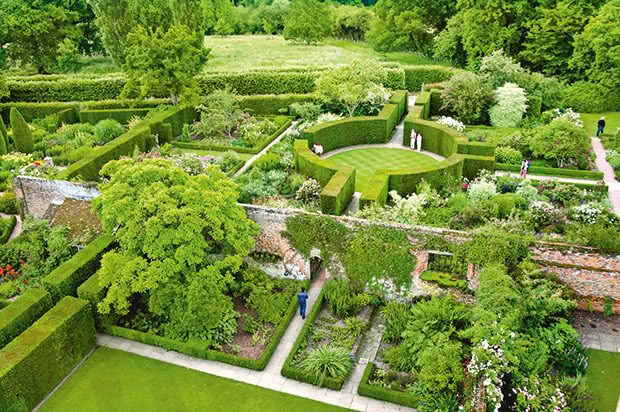
The rose garden, one of the rooms at Sissinghurst, includes a perfect circle created from yew hedging, and long views from one room to another to encourage visitors to keep exploring.
One of her more famous rooms is the White Garden, filled with white, green, grey, and silver plants. It includes silver-white artemisia, grey santolina and Achillea ageratifolia, white trumpets of Lilium regale and the white spires of eremurus, foxgloves, and delphiniums.
Today, Sissinghurst looks quite different from Vita and Harold’s original planting scheme, but the basic ‘room’ designs remain.
Love this story? Subscribe now!
 This article first appeared in NZ Lifestyle Block Magazine.
This article first appeared in NZ Lifestyle Block Magazine.
